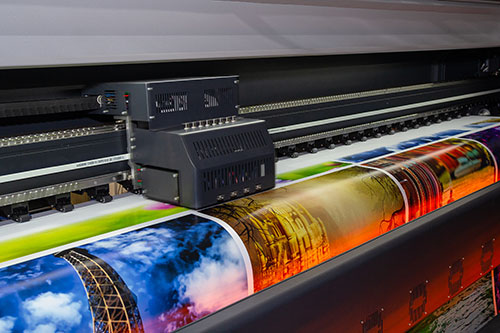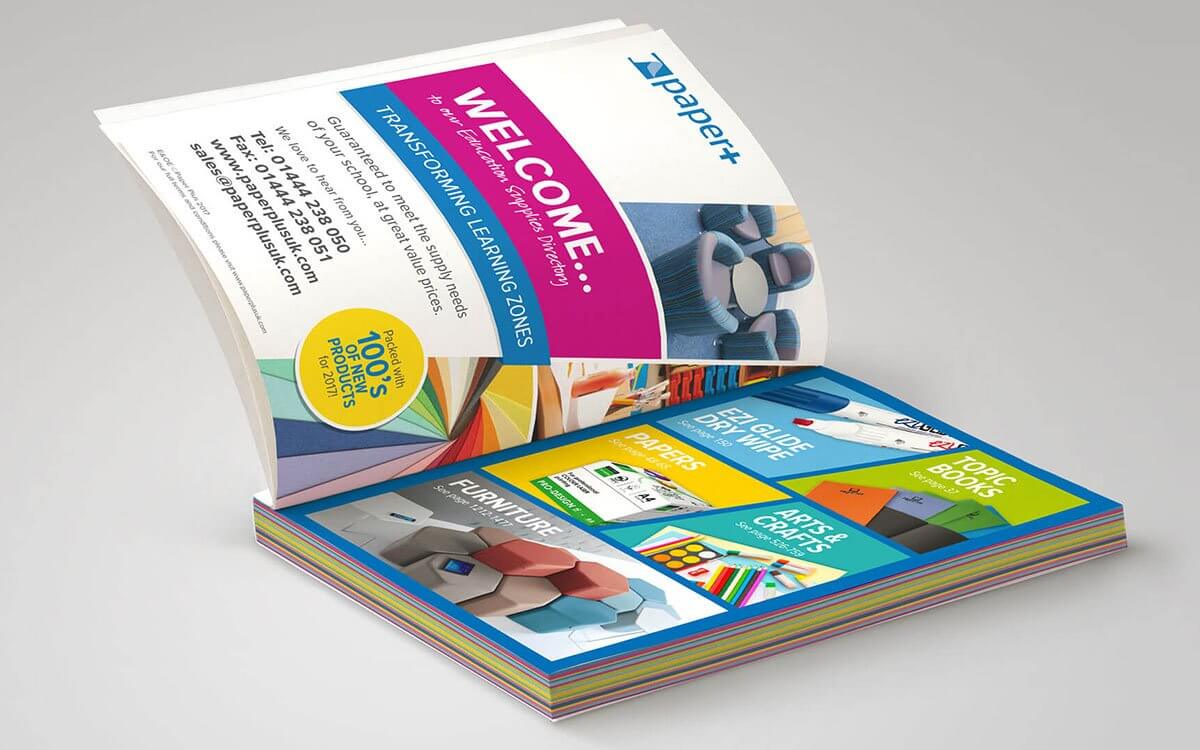The Vital Overview to Understanding Litho Printing and Its Applications
Litho printing stands as a significant method in the printing market, rooted in the concepts of oil and water repulsion. This strategy not just delivers premium photos yet also satisfies different business demands. Its applications range from marketing materials to packaging, showcasing its adaptability. As the sector adapts to brand-new modern technologies, the evolution of litho printing questions concerning its future and importance in an electronic landscape. What lies ahead for this enduring method?

What Is Litho Printing?
Litho printing, a widely used printing technique, depends on the principle of oil and water repulsion. This method employs a level printing surface area, typically a metal plate, which is dealt with to assure that the photo locations are receptive to oil-based inks while the non-image areas repel them. The process begins with the creation of an image on the plate, typically with drawing or photographic methods. When the picture is prepared, the plate is moistened with water, complied with by the application of ink. The ink adheres only to the image locations, permitting for exact reproduction of graphics and text. Litho printing is preferred for its capacity to create top notch prints with great detail and lively colors. It is commonly used in business applications, including newspapers, publications, and packaging, showcasing its versatility and efficiency in fulfilling the demands of modern printing.
The History of Lithography
Although lithography is a modern-day printing staple, its origins map back to the late 18th century when German dramatist Alois Senefelder developed the technique in 1796. At first established as a technique for recreating texts and pictures, lithography utilized a flat rock surface to develop prints with a chemical procedure. Senefelder's advancement permitted greater adaptability and artistic expression contrasted to previous printing methods.By the 19th century, lithography gained prevalent acceptance, coming to be a popular option amongst artists and publishers. It allowed the mass production of illustrations, maps, and posters, significantly influencing the printing industry. The strategy even more progressed with the intro of lithographic presses, boosting efficiency and quality.As the industrial transformation proceeded, lithography adapted to meet the demands of industrial printing, leading the way for modern applications. Today, it remains a crucial technique in various industries, including posting, product packaging, and great art recreation.
Just How Litho Printing Works
A key feature of litho printing is its reliance on the principle of oil and water repulsion - litho printing. In this process, images are transferred from a level surface area, generally a metal or polymer plate, to paper. The plate is treated so that the areas meant for printing bring in ink, while the non-image locations repel it due to their fondness for water. The printing begins by moistening the plate with water, which complies with the non-image areas. Ultimately, an oil-based ink is applied, sticking just to the desired photo areas.When home plate enters call with the substratum, the ink is transferred, creating a print. The litho printing process can producing top quality pictures with fine detail. It is commonly made use of for automation as a result of its performance and consistency, making it a preferred approach for business printing applications
Benefits of Litho Printing
One remarkable advantage of litho printing is its ability to generate premium images continually, making it a suitable choice for business jobs. This printing technique uses a level printing plate, guaranteeing also ink distribution and sharp information. Litho printing is also renowned for its shade accuracy, enabling vivid and true-to-life recreations, which is important for branding materials.Moreover, it supports a wide array of substratums, consisting of paper, cardboard, and even particular plastics, enhancing its adaptability. The procedure is affordable for large runs, as economic situations of scale decrease per-unit costs. On top of that, litho printing has a quick turnaround time, enabling for reliable manufacturing schedules.Its sturdiness likewise implies that published materials withstand fading, ensuring that the final item keeps its visual charm with time. Overall, these advantages make litho publishing a recommended choice throughout numerous markets, adding to its long-lasting popularity.
Applications of Litho Printing in Company
As services significantly seek dependable and top notch printing remedies, litho printing becomes a key player in numerous applications. This technique is especially preferred for producing advertising materials such as pamphlets, leaflets, and directories, many thanks to its capability to provide vivid colors and sharp images. Additionally, litho printing is frequently employed for packaging solutions, allowing companies to develop attractive labels and boxes that enhance product appeal.In the field of company identification, litho printing contributes in generating specialist stationery, calling card, and marketing product, which assist reinforce brand acknowledgment. In addition, it is commonly utilized in the publishing industry for published products such as books and magazines, where regular high quality is vital. Generally, litho printing's adaptability and effectiveness make it a necessary device for organizations aiming to communicate properly and establish a solid market presence.
Artistic Uses of Litho Printing
Litho printing works as a flexible medium in the domain name of printmaking, offering artists an one-of-a-kind technique to share their imagination. This technique enables a variety of creative applications, from conventional prints to modern interpretations. By discovering the nuances of litho printing, musicians can harness its distinct top qualities to enhance their job.

Printmaking Strategies Summary
The virtuosity of printmaking encompasses a diverse array of techniques, with litho printing sticking out for its unique method to photo creation. This technique counts on the principle of oil and water repulsion, allowing musicians to attract directly onto a limestone or metal plate with an oily tool. Once prepared, the plate is moistened and tattooed, moving the image onto paper through pressure. Litho printing is commemorated for its capacity to produce fine details and rich tonal variations, making it a popular selection among artists. Furthermore, the process is flexible, suiting both traditional techniques and contemporary adaptations. This versatility enables litho printing to bridge numerous imaginative designs, enriching the printmaking landscape with its distinctive features and abilities.
Special Artistic Applications
Checking out the unique artistic applications of litho printing exposes its remarkable convenience in various imaginative fields. Musicians make use of litho printing to create intricate designs and textures, allowing for expressive and detailed works. The procedure promotes the recreation of vibrant shades, making it ideal for images and great art prints. Several modern artists embrace lithography for its ability to incorporate typical methods with contemporary concepts, resulting in cutting-edge art work. Furthermore, litho printing is frequently employed in the manufacturing of restricted edition prints, enhancing their worth and charm. The tactile top quality of litho prints adds a distinct measurement, drawing in collectors and art fanatics alike. Generally, litho printing stays a significant medium for artistic expression, linking timeless approaches with contemporary creativity.
The Future of Litho Printing in a Digital Globe
As the printing industry advances, litho printing deals with the challenge of incorporating digital modern technologies to continue to be appropriate. Methods focused on digital integration, together with trends in sustainability and technology, will browse around this web-site form its future - company website litho printing. Understanding these characteristics is important for sector stakeholders looking to adjust to a rapidly transforming landscape
Digital Integration Techniques
A growing variety of litho printing firms are welcoming digital integration techniques to stay affordable in a significantly electronic landscape. By including electronic workflows, these business can streamline processes and improve performance. This integration enables for real-time information administration and improved interaction between divisions, lowering turnaround times noticeably. Furthermore, electronic devices enable much better personalization and customization of published materials, providing to details customer demands. Business are likewise taking on crossbreed printing remedies that combine conventional litho methods with digital innovations, using convenience in production. Additionally, leveraging information analytics aids in recognizing market fads and consumer choices, permitting organizations to make enlightened choices. Overall, digital combination is coming to be important for litho printing companies aiming to introduce and react to progressing market requirements.
Sustainability and Development Trends

Frequently Asked Inquiries
What Materials Are Typically Made Use Of in Litho Printing?
The materials frequently made use of in litho printing consist of aluminum plates, ink, water, and paper. Each part plays a crucial function in the printing process, making certain high-quality image recreation and reliable transfer of ink onto the substrate.
How Does Litho Printing Compare to Digital Printing?
Litho printing supplies exceptional shade consistency and top quality for big runs, while digital printing masters short runs and personalization. Each approach has distinctive advantages, dealing with different requirements based upon production range and cost-efficiency.
What Is the Typical Turn-around Time for Litho Printing Projects?
The typical turn-around time for litho printing tasks varies, normally varying from a couple of days to numerous weeks. Variables affecting this duration consist of task intricacy, quantity, and needed finishing procedures, impacting general manufacturing schedules.
Can Litho Printing Accommodate Customized Sizes and Formats?
Litho printing can certainly fit customized sizes and formats, allowing for flexibility in design. This adaptability enables customers to attain one-of-a-kind print end results customized to their certain requirements, enhancing the overall effectiveness of their tasks.
What Are the Ecological Effects of Litho Printing?
The environmental effects of litho printing consist go of source intake, chemical use, and waste generation. Innovations in sustainable practices and green products are gradually lowering these unfavorable effects, advertising a more environmentally responsible approach to printing.